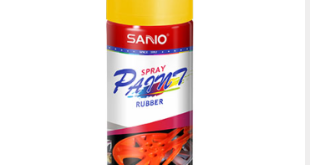Eczema in the Spring: How to Manage It
Spring is here, with lighter evenings and warmer days. It’s undoubtedly a great time of year – not just because the Springtime makes us feel better in general, but also because the weather is more pleasant for eczema sufferers, with temperatures that are nice — not too warm, not too chilly.
The temperature has a significant impact on your child’s eczema. Check out our informative infographic to see how many layers of clothing your kid should have as the weather gets warmer.
If your child’s eczema is one of the few that improves during the Spring, you might be able to change the emollient you’re using and go for a lighter version that is easier to apply and more comfortable to wear. It’s only a small change, but it’s well worth taking advantage of while you can. If your doctor or dermatologist isn’t available, try a different formulation from your preferred brand.
However, if the different formulation also isn’t working and you need immediate expert advice on the situation, you can also reach out to the experts available through the many best digital healthcare platforms available out there. Healthcare platforms provide you with expert advice on any of your health-related queries completely online from the comfort of your home. If you are a busy parent struggling to find time for a doctor consultation, you can check this site out to know how you can make use of this facility and get the right advice for you and your loved ones.
If your child’s eczema gets worse this Spring, there might be a number of reasons why.
With the weather cooperating, perhaps your child can play outside longer in the days after nursery or school without having to fight against itchy skin. However, understanding some of the reasons that cause Springtime flare-ups and what to do about them is definitely worthwhile.
Spring and Summer: How to Manage Eczema Episodes
If your child’s eczema gets worse this Spring, it might be due to a number of reasons. It’s important to keep an eye on what could be causing the problem so you can avoid and cure your kid’s eczema correctly. We’ll look at some of the most prevalent causes of Springtime eczema in this section.
Pollen and moulds from blossoming trees and springtime blooms may cause sneezing, nasal congestion, headache, or fatigue.
When you’re allergic to plants and animals, the eczema reaction is generally accompanied by allergic rhinitis (hayfever) – runny noses, watery eyes, and itchy skin are all rather unpleasant.
What’s the answer?
If you have a sensitive allergy, an ioniser/air purifier may help remove allergens like pollen and spores from the air, particularly in your child’s room but also in other spaces where they spend a lot of time – for example, the kitchen, playroom, living room. It’s also worth asking your doctor if antihistamines are OK to use to reduce the link between pollen and allergies. Once a day using an ioniser, clean surfaces with a damp cloth twice. This will collect the dust and pollen that has settled overnight. Sleeping is when it’s especially important.
Cause: variable outside temperatures
Winter days are still interspersed with chilly mornings at this time of year, making it more difficult to get the number of layers correct. Heat and cold both aggravate eczema skin, as you’ll be aware.
What’s the answer?
Consider how many layers there are, especially on the outside. – If your child is active outdoors, a cotton jumper and windproof shell layer may be better than a thick winter coat since it may be too warm now.
For older kids who dress themselves, keep lighter jackets in your cloakroom so you have the right layer on hand when you go out. In their closet, replace winter woollies with lighter attire. Most youngsters adopt a “grab and go” method of getting dressed, therefore ensuring that they have appropriate clothing in their wardrobe is half the battle.
Cause: indoor humidity can also affect eczema skin.
When the heating is on throughout the winter, the skin may become progressively drier as a result of dehydration.
The solution?
On colder days, invest in a humidifier or open the windows to help you battle the drying effects of central heating. Continue to use their Scratchsleeves pyjamas at night to protect your kid’s skin from becoming sore, but use a lower tog duvet so they don’t overheat.
Easter fun for eczema kids
Spring is a season of new beginnings and rebirths, which is especially meaningful to eczema sufferers since it’s when their symptoms typically subside. Many children enjoy the prospect of receiving many Easter eggs! Unfortunately, many eczema patients are allergic to milk, which adds another layer of complexity to Easter goodies like chocolate and waffles.
Of course, a milk allergy doesn’t imply that your youngster has to miss out on the fun; see our article about allergy-friendly, “free-from” easter eggs. We’ve also compiled a list of exciting activities for kids during Easter egg hunts without dairy products.
This is a great time of year for your child. We hope these hints and suggestions assist your youngster in finding joy in the winter season.
You can learn a lot more about dealing with seasonal eczema on our blog or join the conversation on our Facebook page, where you may share advice with other parents of kids with eczema.
ScratchSleeves PJs also produce and market our unique stay-on scratch mitts and pyjamas for itchy babies, toddlers, and children. We now offer sizes ranging from new-born to adult years in a variety of colours. For additional information, go to our primary site.
 Masstamilan24.com
Masstamilan24.com





